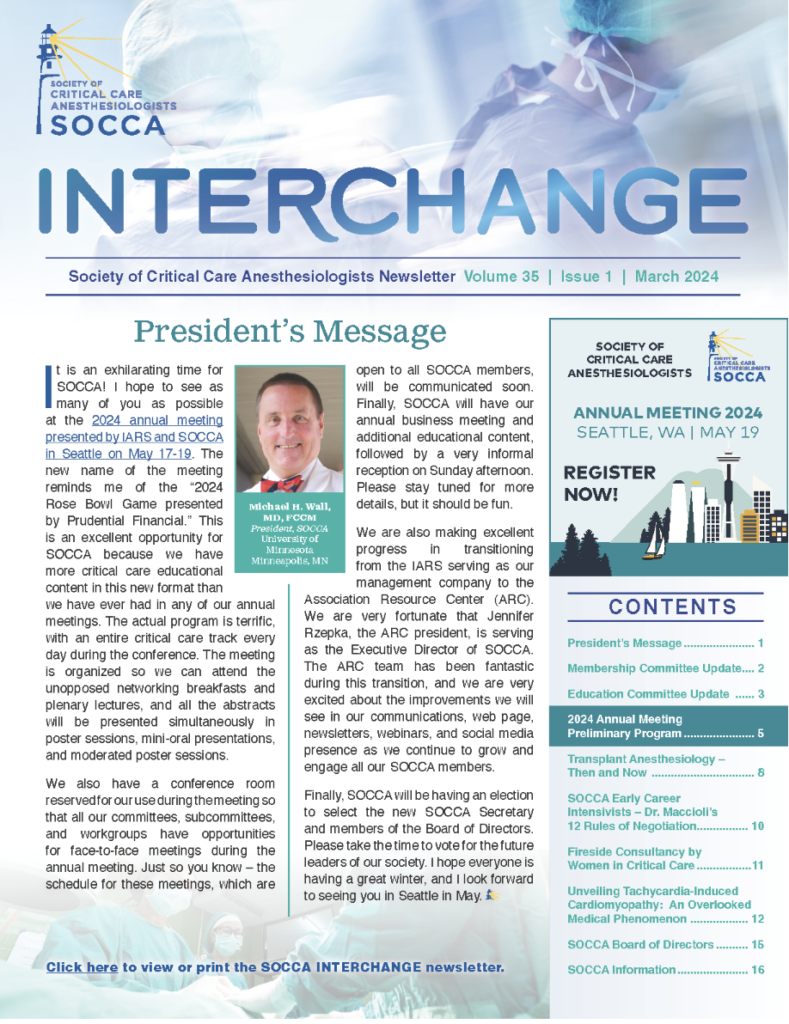Open Repair of Massive Incisional Hernia with Loss of Domain
Background:
Loss of domain is a situation in which the majority of the viscera are outside of the abdominal wall, as may occur with large hernias. In this report, we discuss the surgical approach to repair of the abdominal wall and reduction of the abdominal viscera, and we highlight the significant anesthetic challenges associated with these repairs.
Case Report:
A 74-year-old man presented to the operating room for an open abdominal incisional hernia repair with mesh, posterior component separation (retrorectus dissection and subsequent reconstruction of the linea alba), external oblique re-release, and abdominal wall reconstruction with flap to repair a recurrent massive ventral incisional hernia following an open AAA repair in 2005. An initial repair of the incisional hernia was attempted with mesh and anterior component separation, but eventually failed, leaving the patient’s small bowel, large bowel, liver, and gallbladder in an extra-abdominal location. To facilitate this attempt at the procedure, the patient underwent preoperative progressive pneumoperitoneum to increase abdominal wall compliance. A peritoneal dialysis catheter was used to insufflate the intra-peritoneal space with room air twice a day for 10 days prior to surgery. Unfortunately, this therapeutic pneumoperitoneum resulted in extensive subcutaneous and intramuscular emphysema throughout the abdomen, chest wall, face, and neck, plus a small right pneumothorax and moderate pneumomediastinum.
On the day of surgery, general anesthesia was induced and endotracheal intubation was performed via direct laryngoscopy without difficult. Two large-bore IVs and an arterial line were placed. An orogastric tube was placed after intubation and 500 mL of bilious gastric contents were suctioned. Large volume resuscitation was used for hemodynamic management and only low-dose phenylephrine was required. Despite the preoperative attempt at progressive pneumoperitoneum, the patient had incredibly redundant colon that could not be safely returned to the abdomen. A right hemicolectomy and cholecystectomy were, therefore, performed to facilitate closure, with prophylactic bilateral fasciotomy to reduce the risk of compartment syndrome.
Post-operatively, the patient was admitted to the ICU intubated, sedated, and paralyzed. Paralysis was maintained for 24 hours post-operatively to eliminate abdominal wall muscle tone and reduce intraabdominal pressures. His plateau pressure started at 20 cm H2O, rose to 29 at the end of the procedure, then fell to 25 cm H2O in the ICU. His course was complicated by AKI and progressive hypoxemic respiratory failure on post-operative day (POD) #1, requiring VV ECMO, multiple exploratory laparotomies for diffusely ischemic bowel, and ultimately multiorgan failure with metabolic disarray that proved unresponsive to medical therapy. He was made DNR/DNI on POD#10 from the initial open hernia repair and died shortly after withdrawal of care.
Discussion:
This case highlights the significant challenges associated with complex perioperative procedures and the role of multidisciplinary perioperative care support. Reducing a hernia of this size frequently induces abdominal hypertension and can cause abdominal compartment syndrome. In this case, compression of the renal veins and mesenteric venous drainage due to increased intra-abdominal pressure likely precipitated AKI and mesenteric ischemia. Increased intra-abdominal pressure also likely put upward pressure on the diaphragm, reduced lung compliance, and precipitated worsening respiratory failure, ultimately requiring ECMO support.
This patient had several preoperative medical diseases that likely further contributed to his perioperative complications. For example, he was an obese former smoker with CPAP-dependent obstructive sleep apnea. His baseline risk of perioperative respiratory complications was therefore high. Moreover, he was an insulin-dependent diabetic at risk of impaired gastric emptying, delayed wound healing, and perioperative AKI.
This case highlights the role of the Critical Care Anesthesiologist as a perioperative specialist with critical roles in the operating room, providing care to high-risk patients and surgical procedures. Critical Care Anesthesiologists also provide expert postoperative critical care to manage complications, both expected and unexpected, for these righ-risk patients. When working together as part of a multidisciplinary team, critical care anesthesiologists fill an important role in the care of critically ill perioperative patients. Despite this patient’s poor outcome, Critical Care Anesthesiologists were critically important in providing optimal perioperative care to this and other high-risk patients.





































